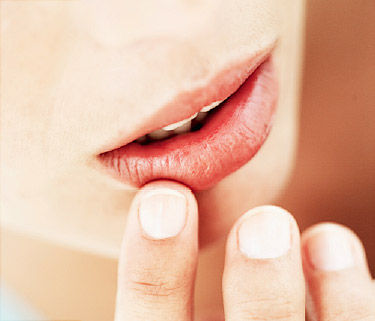Mouth Sores
- Dr. Gloria Jung
- Aug 25, 2018
- 3 min read

* No Copyright Infringement Is Intended
There are many different types of mouth sores that can develop in or around the mouth. Many of them can be painful and unsightly. If your mouth sore does not go away within a week or 10 days, it is important to consult your dentist as it may be a sign of something more serious. Getting your mouth sore diagnosed early can eliminate further complications and get you on your way to feeling better much faster!
Here are 3 common types of mouth sores, their causes, and recommended treatment:
1) Canker Sores
Signs and Symptoms: Canker sores usually present as small white/yellow lesions with a red border. They often develop inside the mouth on the cheek, lips, tongue and gum line areas. Canker sores are not contagious.
Causes: Canker sores can arise from many different things. However, trauma or injury to the area it presents is often the main reason for a canker sore. Other possible causes are acidic, spicy or salty foods, hormonal shifts, stress and even a vitamin B deficiency.
Treatment: Canker sores typically heal within 1-2 weeks without any treatment. However, if they are painful, over the counter medications such as topical anaesthetics and antimicrobial mouth rinses can provide temporary relief.
2) Cold Sores
Signs and Symptoms: Unlike canker sores that are usually white or yellow, cold sores tend to appear as clusters of red, raised blisters outside of the mouth (typically around the lips). They are highly contagious. Cold sores usually cause pain, a burning sensation, or itching before they burst and crust over.
Causes: Cold sores are caused by the herpes simplex virus (HSV)-1 and are highly contagious. The initial infection with the virus can be accompanied by flu-like symptoms and can cause painful oral lesions. Because there is no cure for the herpes virus, it remains inactive until triggered. Reoccurrence can occur when an individual has a fever, fatigue, stress, menstruation or from exposure to the sun.
Treatment: Cold sores typically heal by themselves within a week. Just like with canker sores, over the counter topical anaesthetics can provide some temporary relief. Your dentist may also prescribe antiviral drugs to reduce the healing time.
3) Tooth abscess
Signs and Symptoms: A tooth abscess typically presents as a "pimple" looking sore on the gum line. It occurs when there is a bacterial infection in the nerve of the tooth. Symptoms of a tooth abscess include severe toothache with pain, sensitivity to hot and cold beverages or food, fever, and swollen lymph nodes.
Causes: A tooth abscess can occur due to decay in a tooth. More specifically, it occurs when bacteria enters the dental pulp, nerves and blood vessels of the tooth. The bacterial infection causes pain and inflammation. Because the inflammation occurs in a tight space, pus is forced into a "pocket" (abscess) at the tip of the root.
Treatment: If diagnosed early enough through a dental examination and xrays, a root canal treatment can typically eliminate the infection to save the tooth. This is often accompanied by a round of antibiotics to stop the bacterial infection. However, if the tooth cannot be saved, the dentist will have to extract the tooth.
If you have a mouth sore that has been present for more than a week, it is advised to seek dental treatment. However, if the sore is causing you pain and/or it presents with other symptoms such as a fever, it is recommended to seek dental treatment as soon as possible.



























